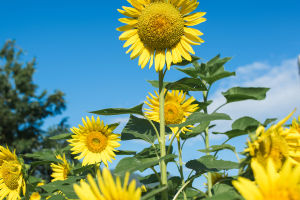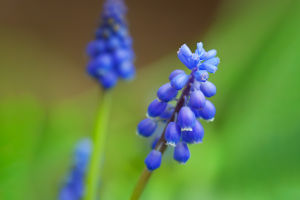Lily of the Valley is a beautiful and symbolically significant plant, admired for its pure white, bell-shaped flowers and rich fragrance.
The various aspects of Lily of the Valley's natural distribution, ecological characteristics, medicinal value, and cultural symbolism make it a topic worthy of exploration.
1. Plant Overview
Lily of the Valley is a perennial herbaceous plant belonging to the Liliaceae family. It is native to temperate regions of the Northern Hemisphere, especially Europe and northern Asia.
It typically grows in forested areas. The plant's stems typically reach about 15 to 30 centimeters in height, adorned with broad, elliptical leaves. The flowers are bell-shaped, small, and elegant, usually growing in clusters of 6 to 15 blooms.
2. Growing Environment
Lily of the Valley thrives in shady, moist, and well-drained soil. It prefers a warm, humid environment and does not require much sunlight, often flourishing in forest understories or shady spots.
The plant has strong cold tolerance, allowing it to endure the harsh winters of temperate regions in the Northern Hemisphere, where it commonly appears as a wild plant.
3. Propagation and Growth
Lily of the Valley primarily propagates through underground rhizomes (also known as bulbs). Each spring, the rhizomes produce new shoots, forming new plants.
This method of propagation enables the plant to spread rapidly in suitable environments. While Lily of the Valley can also be propagated by seeds, the germination rate is relatively low, so cultivation mainly relies on rhizome propagation.
4. Medicinal Value and Toxicity
Lily of the Valley has certain medicinal value in traditional herbal medicine. Historically, it was used to treat heart diseases, relieve rheumatism, and improve blood circulation.
The plant contains a chemical compound called "convallatoxin," which has specific pharmacological effects. However, Lily of the Valley is also toxic due to the presence of other toxic compounds, so it must be used cautiously to avoid poisoning.
5. Cultural Symbolism
Lily of the Valley holds rich symbolic meanings in various cultures.
In Europe, it is known as the "Mayflower" because it typically blooms in May. In France, Lily of the Valley is considered a symbol of good luck, and on May 1st each year, it is traditionally given as a blessing. It is also commonly used in wedding and celebration decorations, symbolizing purity and happiness. In Japan, Lily of the Valley is also viewed as a symbol of happiness and purity.
6. Cultivation and Care
Lily of the Valley is popular in home gardening due to its beautiful flowers and fragrant scent. When cultivating Lily of the Valley, consider the following points:
-Soil: It prefers moist soil rich in organic matter, ideally well-drained humus.
-Light: It grows best in shady or partially shaded areas, avoiding strong direct sunlight.
-Watering: Keep the soil moist but avoid waterlogging to prevent root rot.
-Fertilization: Apply a small amount of balanced fertilizer during the growing season, but avoid excessive fertilization as it can affect plant growth.
7. Common Issues
Common pests and diseases affecting Lily of the Valley include aphids, snails, and root rot. Appropriate insecticides and fungicides can be used for control, alongside maintaining good ventilation and proper watering practices.
Lily of the Valley seeds need a warm, moist environment for cold stratification to promote germination. Typically, seeds should be placed in moist sand and exposed to low temperatures before being transplanted into the garden.
Lily of the Valley is cherished for its beautiful flowers, unique fragrance, and rich cultural symbolism. However, it also possesses certain toxic properties, so caution is needed in its use. Whether as a garden plant or for its medicinal value, Lily of the Valley is a fascinating plant deserving of attention and study. Through this introduction, we hope you gain a deeper understanding of Lily of the Valley and appreciate its beauty while respecting its characteristics and potential risks.


